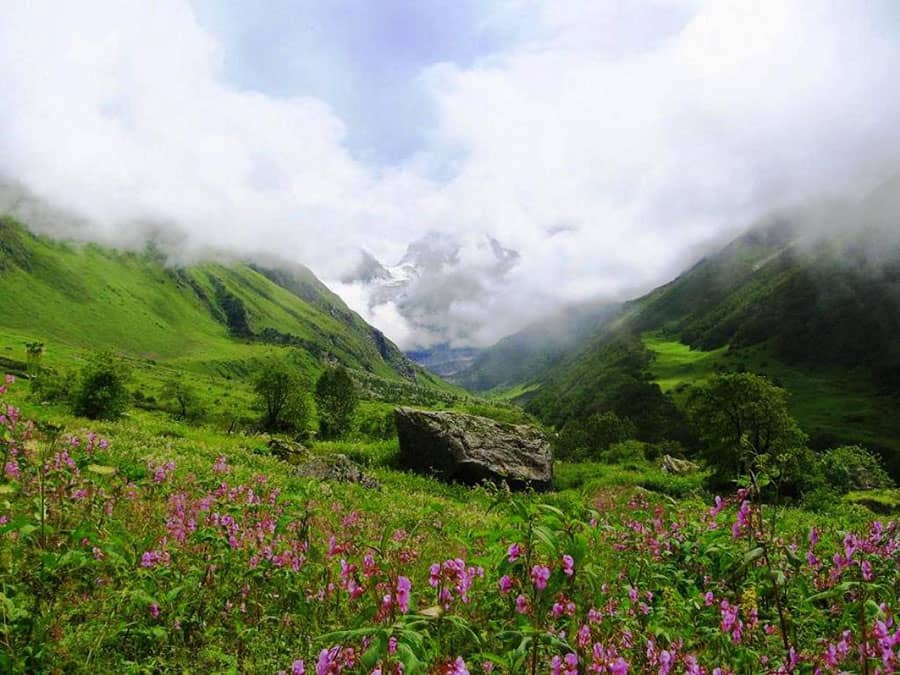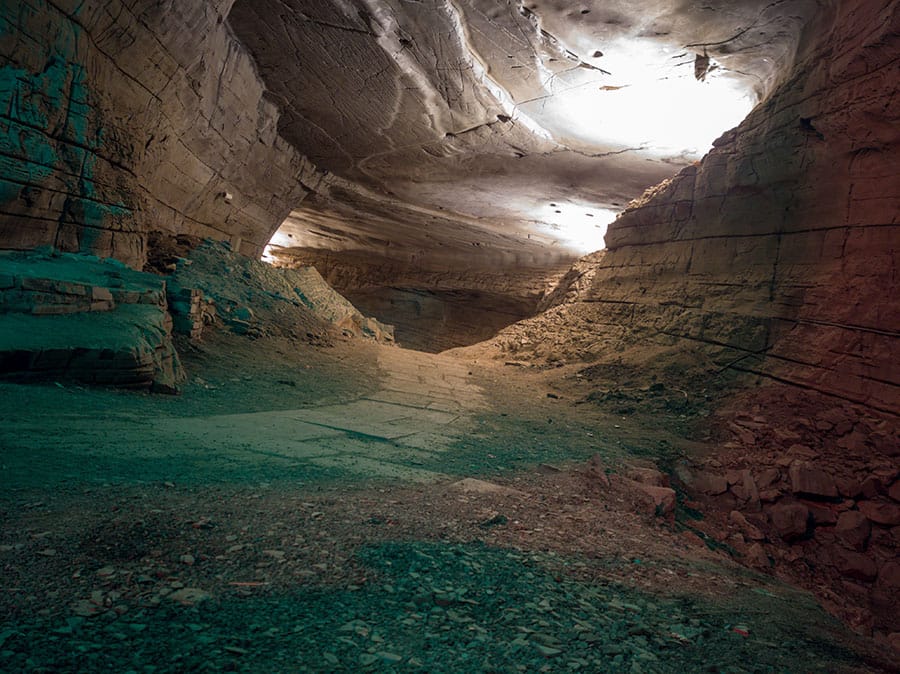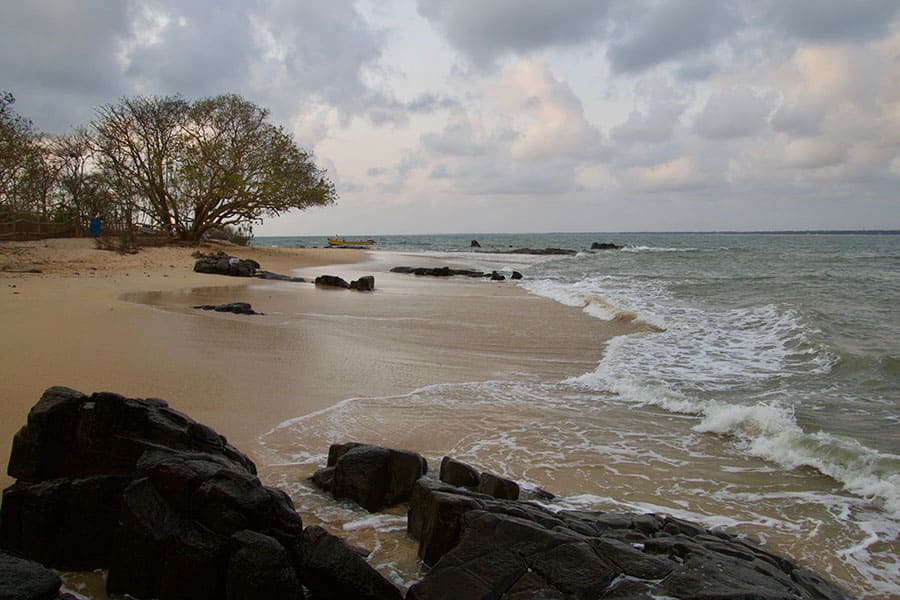Do you think that God is a creator, and the earth is his masterpiece? If not, this post will surely change your mind. While human-made creations are undoubtedly stunning, the natural landscapes you will encounter are incredibly magnificent. Take a look at the following list of natural wonders that you should definitely include in your travel plans.
Most Beautiful Natural Landscapes in India
1. Valley of flowers

Valley of Flowers, located in a national park in Uttarakhand is well known for its splendid variety of blooming flora. The scent of the entire valley is heavily floral. The flowers bloom as per seasons, and you can come across some beautiful flowers like Meadow Geranium, Snake Foil, Hooked Stick Seed, Himalayan Rose, Blue Poppy, River Anemone, White Leaf Hog Foot and Dog Flower. The snow-clad mountain peaks, Pushpvati River flowing through the middle of the valley, and the vibrant flowers make the entire location a scenic place.
2. Belum Caves, Andhra Pradesh

Located near Kurnool, Belum caves are the second-longest caves in India. Remains from prehistoric times of 4500 BC have been found here, and also relics from the time when the Jain and Buddhist monks meditated in this cave, along with the vessels used by them. Discovered in the 1880s but unmapped and unexplored till the 1980s, this cave has a very interesting formation of tunnels that will intrigue you for sure.
3. St Mary’s Island, Karnataka

St. Mary’s Islands, also known as Coconut Island, North Island, Darya Bahadurgarh Island and South Island are a set of four beautiful small islands in the Arabian Sea in Udupi, Karnataka. It is listed as one of the geological monuments of Karnataka and India. This is the land where Vasco De Gama set his first foot. The shoreline is full of crystalline rocks that were created at the time Madagascar Island got separated from India, which is some million years ago. According to scientific records, rock formations in St.Mary’s Island are similar to the rock formations at Madagascar in Africa. The separation occurred due to sub-volcanic activity. Standing at these rocks and viewing the sunset is indeed a mind-blowing experience.
4. Borra Guhalu
Borra Caves, an impressive architectural wonder, are recognized as among the lengthiest caves in India, stretching up to 80m. Within these caves, water seeps through the cave’s ceiling and interacts with minerals in the rocks, resulting in distinctive formations on the ground known as stalagmites, as well as formations hanging from the ceiling called stalactites. Additionally, a natural Shivling has formed within the cave, which is revered by tribal communities and local residents. Furthermore, archaeological discoveries dating back over 50,000 years have been unearthed within this cave.
5. Barren Island
Barren Island situated in the Andaman Sea, northeast of Port Blair. It is the only active volcano in India, and it erupted recently in 2018. People from around the world are coming to Andaman to witness this phenomenon. The waters surrounding Barren Island are one of the world’s top scuba diving Apart from that, the area around Barren island is famous for crystal clear water, Manta Rays, splendid basalt formations, the topography of past lava flows and beautiful coral gardens. This dive destination is remote but can be accessed by ship from Havelock Island.
6. Reverse Waterfall at Sinhagad
During the monsoon season in Maharashtra, there is a location referred to as the Grand Canyon. Here, due to strong wind pressure, the water begins to flow in an upward direction. It is possible to stand on the top of the waterfall, protected by a railing, and experience the refreshing sensation of cold water splashing onto oneself. The scenery is remarkable, and one can savor this extraordinary defiance of gravity while indulging in hot Chai and Bhajjis.
7. Double Decker Living Root Bridge, Cherrapunji
Living root bridges are situated in one of the world’s wettest places, Cherrapunji in Meghalaya. They are certainly awe-inspiring and mysterious. The bridges are living and ever-growing, as they are made of roots of Ficus Elastic, which make them extremely strong and sturdy. They take nearly 15 years to develop fully. Some of the bridges are more than 500 years old. Isn’t this truly marvelous?
8. Yana Rocks, Karnataka
Yana Rocks, located in Yana village, are situated amidst the lush jungles and grand hills of Uttara Kannada district in Karnataka. These rocks are composed of crystalline Karst limestone and exhibit two unique formations known as Bhairaveshwara Shikhara and Mohini Shikhara. Additionally, there is a cave temple nestled at the base of these rocks, where a magnificent festival takes place during Maha Shivratri.
9. Magnetic Hill, Ladakh
Magnetic Hill is one of the most popular destinations in Ladakh. It is situated near Leh and here illusion seems to defy the rules of gravity. Commonly known as the ‘Gravity Hill’, this place pulls vehicles in an upward direction, creating an optical illusion. The layout of the area and the surroundings, create an illusion of a hill. The road is actually a downhill road, but it appears like vehicles are rolling upwards in defiance of gravity. Truly splendid.
10. Marble Rocks of Bhedaghat
The Marble rocks of Bhedaghat in Jabalpur, located on the Narmada river, span a distance of 3 kilometers and are truly captivating. The stunning combination of the gushing Dhuandhar waterfalls and the Marble rocks is a magnificent natural wonder. The entire landscape is bound to enchant and inspire a deep appreciation for nature.
11. Lonar Lake
Lonar Lake is situated outside the Lonar town in Maharashtra. It was formed when a meteor crashed on Earth more than 50,000 years ago. It is also known as the world’s third-largest crater. The water of this lake is both saline and alkaline in nature and looks green in colour from afar. This lake is mentioned in ancient scripts like Skanda Puran, the Padma Puran, and Aaina-i-Akbari.










